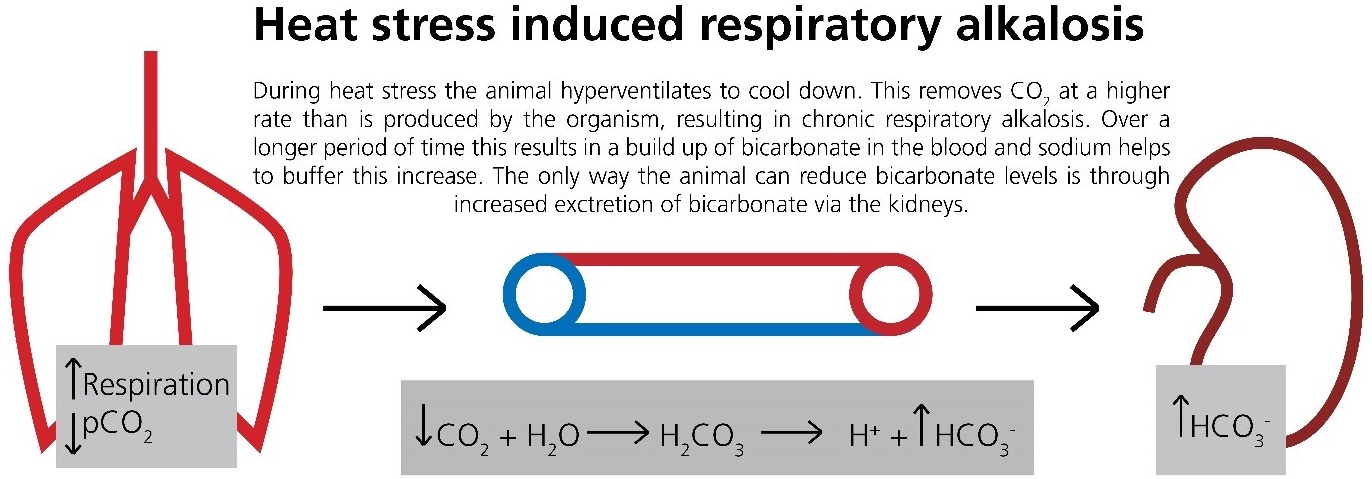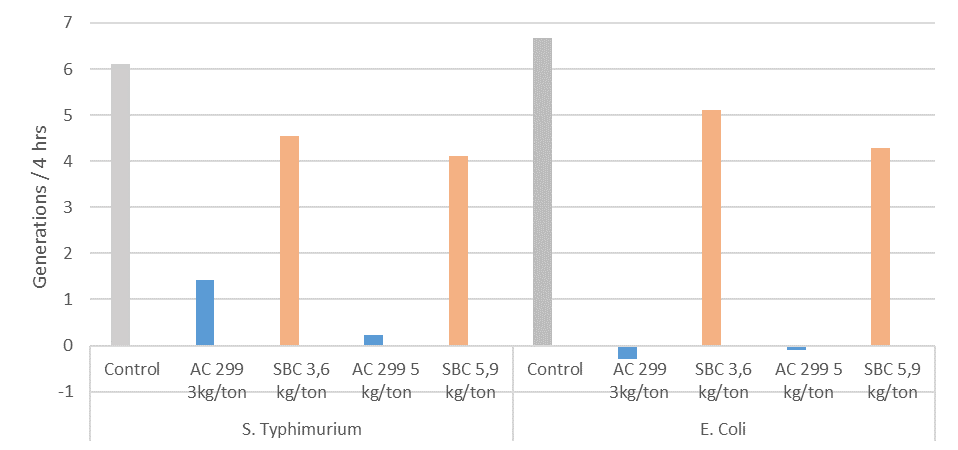Dealing with dietary electrolyte balance optimally
Improving the dietary electrolyte balance in animals is extremely important in the summer months as poultry producers are seeking solutions to help their animals deal with the issue of heat stress, which is very characteristic of the hot spring and summer months. For this reason the only sodium formate product specifically for formulated for feed, ProPhorce™ AC 299, was developed. Not only is it an economically efficient sodium source, but it is also as a non-corrosive, dry acidifier. As such it can also help in the management of microbial pathogens.
Until now, sodium bicarbonate was commonly used to improve sodium content and dEB in poultry feeds. However sodium bicarbonate represents a hidden cost as a source of sodium, since it also has a high buffering capacity. As such it is capable of neutralizing acids, whether they be acidifiers which are added at a cost or the gastric acids which is vital for optimal digestion.
The myth about sodium bicarbonate
Unfortunately there are also some myths that have built up around sodium bicarbonate, usually summarized as, “the animal needs bicarbonate to combat a lower blood pH due to heat stress.”
During heat stress poultry increase their rate of respiration during heat stress in an effort to cool down. The net effect of this is expelling CO2 giving an excess of bicarbonate in the blood, increasing pH and ultimately leading to a chronic respiratory alkalosis. So in fact the problem is that they have too high blood pH. Additionally, the orally ingested bicarbonate in sodium bicarbonate is neutralized by digestive acids resulting in CO2 and H2O and an increase in pH.
By increasing dEB we increase the sodium that once absorbed acts as a buffer and binds the bicarbonate that is in the blood due to the respiratory alkalosis. In this form (NaHCO3) the animal is able to excrete the excess bicarbonate via the kidneys returning blood pH back to normal. A secondary effect of the higher sodium is that it stimulates the thirst center, increases water intake and reduces body temperature. So in fact it is the sodium that the key for handling heat stress and not bicarbonate.

Additional benefits – antibiotic reduction
One of the most common tools available for antibiotic reduction is the use of acidifiers due to their antimicrobial effects. These effects are only true for the undissociated acids, since in dissociated form the acid is charged and cannot cross cell walls. So, the lower the pH the greater the chance that the acid will occur in undissociated form. Studies support this by showing that the lower the pH in the stomach the greater the antimicrobial effect in vivo as measured by levels of pathogens in the duodenum. In contrast, the same studies have also shown that sodium bicarbonate can actually increase the levels of pathogens like E. coli in the small intestine.
Additionally acids are added to the diet for their pH lowering effect. We know that a low gastric pH is important for the effect of enzymes like pepsin. This is particularly important in young animals whose enzyme and acid production capabilities are immature. To add expensive acidifiers to any diet and then risk losing up to one third of them by adding sodium bicarbonate seems counterproductive to what we are trying to achieve.
During the summer months pathogens are flourishing due to the increase in warmth, and in some geographies, also due to increased humidity. At Perstorp we know that using ProPhorce™ AC 299, will not only deliver the sodium required to combat heat stress, it also delivers an antimicrobial effect. Ideal in a situation when the animal is stressed, immunosuppressed and under pathogenic pressure.

The antimicrobial effects of ProPhorce™ AC 299 and sodium bicarbonate (SBC) in vitro against S. Typhimurium and E. Coli when dosed at iso-sodium levels.
ProPhorce™ AC 299 is sodium formate based and as such offers both a source of rapidly available sodium and formate. This not only improves dEB, but maintains gastric pH and nutrient digestibility, as well as being antimicrobial. The latter due to the fact that the formate in low pH will occur as formic acid due to the high availability of protons.
Choosing the right partner and product
Perstorp is the global leader in the production of sodium formate, producing 165,000 metric tons at a number of our sites worldwide. Sodium formate can be derived from different chemical processes giving different product qualities. The majority of these products are only suitable for industrial purposes. Whereas Perstorp produces the vast majority of the sodium formate suitable to meet the stringent requirement for a feed quality product.
We have selected this high quality product to produce ProPhorce™ AC 299 which is specifically formulated for ease of use in feed production. This is backed by many satisfied customers in the field. Today we are in the process of expanding our platform even further to meet the increasing demand for highly effective dry acidifier solutions and sodium bicarbonate replacement.
Perstorp’s 135 year history in organic acids enabled us to be the world leader in production of sodium formate (165,000 tons) and the only company that can realistically offer a competitive solution for dEB, and support the product volumes that objective entails.